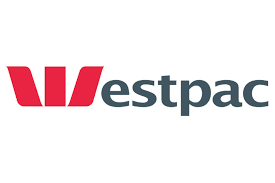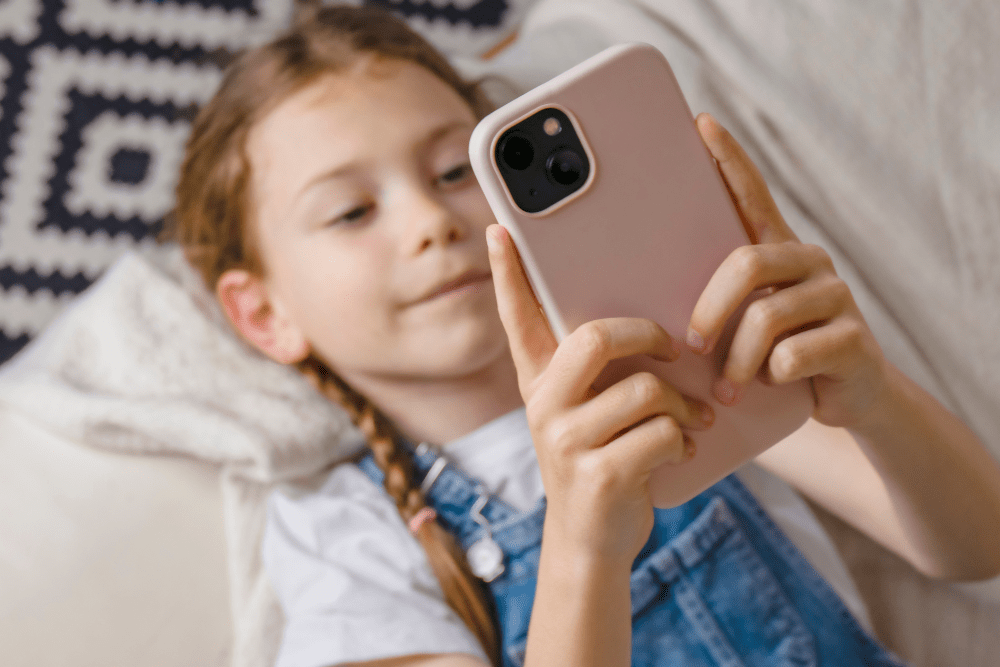A bank account, quite simply, is a transaction account taken out at a bank or other financial institution that houses your funds. It can receive deposits and allow you to withdraw your money whenever you see fit. This will also likely be linked to a debit card, which is commonly provided by banks as part of the account package, while it can also be used for cheques, online usage and digital wallets to be used on your phone.
Bank accounts are utilised across Australia every day by millions of people thanks to their easy accessibility. With digital wallet linkage in particular, making use of your bank account funds has never been easier. Another key positive of bank accounts is their ability to be linked to other accounts such as savings accounts. If you’re low on funds in your bank account, for instance, you can easily receive a transfer from a savings account to top up your balance and continue to spend freely.

|
|||||||||||||||||||
|---|---|---|---|---|---|---|---|---|---|---|---|---|---|---|---|---|---|---|---|
|
|||||||||||||||||||
Use invite code SAVVY10 for $10 upon successful sign-up. (Refer to offer T&Cs on Up website)More details |
|||||||||||||||||||
- Make 5 successful purchases using your Up or 2Up debit card, Apple Pay™, Google Pay™ or other digital wallets in a calendar month to qualify for interest. ATM transactions or transfers are not included.
- No overseas purchase fees when travelling abroad with Up.
- Auto-spend categorisation helps you better understand your purchase habits.

|
|||||||||||||||||||
|---|---|---|---|---|---|---|---|---|---|---|---|---|---|---|---|---|---|---|---|
|
|||||||||||||||||||
Rebates on ATM fees anywhere in Oz. No ING international transaction fees. Zero monthly fees.More details |
|||||||||||||||||||
- $0 ING international transaction fees
- 1% cashback on eligible utility bills
- Australia's Most Recommended Bank
 NAB Classic Banking Account
NAB Classic Banking Account |
|||||||||||||||||||
|---|---|---|---|---|---|---|---|---|---|---|---|---|---|---|---|---|---|---|---|
|
|||||||||||||||||||
No monthly account fees ever, with no conditions. Free use at over 7,000 ATMs around Australia. No overdrawn fees if you happen to go over your account balance. Open an account in less than 7 minutes.More details |
|||||||||||||||||||
- No monthly account fees and no minimum monthly deposits
- No overdrawn fees if you happen to go over your account
- No ATM withdrawal fees at over 7,000 ATMs across Australia
- A NAB Visa Debit card for all your everyday spending

|
|||||||||||||||||||
|---|---|---|---|---|---|---|---|---|---|---|---|---|---|---|---|---|---|---|---|
|
|||||||||||||||||||
Get $40 with a new Complete Freedom everyday bank account.More details |
|||||||||||||||||||
- Get $40 when you open a new Complete Freedom account online and deposit $500 within 30 days
- Zero fees
- Manage your card with internet and mobile banking
- Fraud money back guarantee
 Westpac Choice
Westpac Choice |
|||||||||||||||||||
|---|---|---|---|---|---|---|---|---|---|---|---|---|---|---|---|---|---|---|---|
|
|||||||||||||||||||
Westpac Choice for easy day-to-day bankingMore details |
|||||||||||||||||||
- Pay $0 monthly fee if you’re under 30
- Track trends in Cash flow to stay in control of your monthly budget while tagging expenses in Categories to better understand your spending
- Use Osko by BPAY so you can pay and get paid in seconds
Disclaimer: Savvy is not advising or recommending any particular product to you. We provide general information on products for the purposes of comparison, but your personal situation or goals are not considered here. Although we try to make our comparisons as thorough as possible, we do not have information on all products on the market on our site.
You should always consult a given offer's PDS or further documentation in the process of deciding on which loan to choose, as well as seeking independent, professional advice. If you decide to apply with one of the lenders listed above via our website, you will not be dealing with Savvy; any applications or enquiries will be conducted directly with the lender offering that product.
Why compare bank accounts with Savvy?
Our comparison service is free to use, meaning you can compare bank account offers at any time.
You can compare accounts and choose to open one online from wherever you are, at home or on the go.
By partnering with trusted Australian institutions, you can be more confident when comparing offers with us.
The types of bank accounts
How do I compare bank accounts?
Fortunately, bank account owners are provided a wide range of options when it comes to comparison points between different bank accounts. It’s important to bear these factors in mind when the time comes to choose your bank account.
Interest rates
Some bank accounts will come with higher interest rates than others, so it’s often in your best interests to lean towards those which can earn you more money. Alternatively, if you’ve linked a savings account to your bank account with the same financial institution, the interest earned in that account should be prioritised, as it generally has a higher return.
Account fees
With some accounts, you may find that you’ll be charged a monthly fee for keeping it running. Usually this will only be a fee of around $5 or less, but this can amount to $60 per year spent on fees alone. In most cases, this fee can be avoided by depositing a certain amount of money in your account each month as determined by your financial institution, often between $1,000 and $3,000.
However, there are also no-fee bank account options available if you want to reduce this cost to zero. These accounts may not be wholly fee-free, though, as some accounts will charge a small transaction fee for each purchase you make. While this may only amount to a few cents per transaction, this can add up over time.
Deposit requirements
Another factor to consider is how much you’ll have to deposit into your bank account. Many accounts will enforce a minimum deposit limit each month of anywhere between several hundred to several thousand dollars in order to have your fees waived, so if this could be a restriction for you it’d be wise to shop around for an account with lower limits. Without any deposits, you could be charged your monthly fees and then overdrawn fees on top of that, pushing your account into debt.
Ease of access
Accessibility is an important factor for bank accounts. What use are they if it’s difficult to gain access to them? You’ll almost always receive a debit card to make purchases or withdraw funds from your account. Depending on the financial institution it may be harder to come across ATMs or physical bank branches. To combat this, smaller and more regional lenders will arrange with big banks, the Big Four of ANZ, Commonwealth Bank, NAB and Westpac, to allow access to their ATMs without incurring a fee.
How are bank accounts different to savings accounts?
The big one is that while bank accounts provide you with ready-made access to your funds at any time, savings accounts are designed to store your funds away and keep a gap between them and your day-to-day spending. Access is more limited as a result of this, so utilising funds from a savings account is usually made possible by transferring them into a bank account. Monthly restrictions on the number of times you’re able to withdraw or transfer will apply in some cases, however. Debit cards also can’t be linked to savings accounts, so you’ll only be able to use these with your bank account.
The main benefit of a savings account for a user is that it accrues interest on your deposited funds. Savings accounts have a high interest rate compared to bank accounts, which is designed this way to encourage not using your available money compared to bank accounts. You can even find high interest savings accounts for that very purpose. However, your qualification for the best interest rates may be contingent on several conditions. This can include the linking of your savings account to an everyday transaction account with the same institution, the number of purchases you make or minimum deposit limits each month.
Explained: the process behind opening your bank account
Compare the best options on the market
Before committing to any one financial institution, you should survey the market to find the best account to suit your personal and financial needs. Savvy is a great place to start, as our comparison tools make life easier for you when comparing bank accounts in all the most important areas.
Gather the required documents
You’ll have to prove who you are before opening up a bank account with various forms of identity documentation. You’ll have to supply at least 100 points’ worth to qualify, with documents such as a birth certificate or passport supplying 70 of those. A drivers’ licence or financial entitlement card will count for 40 points, while a credit card will give you 25. Contact your financial institution if you have any questions regarding these requirements.
Submit your application
This is probably the simplest step to complete. Each institution will have their own application for you to fill out either online or in person, which the above identity documents will be required for.
Receive access
Once everything’s been checked off by your financial institution, you’ll be ready to use your account pretty well straight away. Although your debit card might take some time to arrive in some cases, you’ll have access to your bank account to start depositing funds.
Top tips on the best features to look for on your bank account
Bank Account frequently asked questions
These two cards serve different purposes. Debit cards are easy to obtain and help you limit your spending to within your financial means by drawing directly from the funds in your bank account.
Credit cards, on the other hand, are essentially a short-term loan service. They give you a line of credit up to an amount you've been approved for that allows you to make purchases with your card provider’s funds and pay them back, potentially at a high interest rate. Ultimately, it’ll depend on the context of the purchase and your financial capacity.
Yes – this is called a cheque or checking account and can be included as part of your bank account package with some institutions.
No overdraft facilities are able to be attached to your bank account, which allows account holders to apply to access funds up to a pre-determined limit (usually $2,000). From here, the process for approval is very similar to that of a credit card or other loans and if you’re approved, you’ll be able to access your desired funds without any overdrawn fees. In this way, you’re not withdrawing more than you have; you’re making use of approved loan funds. Your bank may allow you to overdraw without going through this process, however, provided the overdrawn amount is small ($200 or less) and your account is brought back to a positive balance within 24 hours.
Yes – a term deposit is a single lump sum of money that you store in an account to accrue fixed interest over a set period of months or years. You won’t be able to touch this money during your term without incurring a fee, and potentially without providing a month’s notice prior to doing so.
Absolutely – the process for doing so is more or less the same as in person, so check out your financial institution’s website to see how you can apply online today.
If you're hoping to close an existing bank account with a different financial institution to the one you're opening a new account with, that's a different story. Depending on the bank they may require you to attend a branch in person or make contact over the phone.




